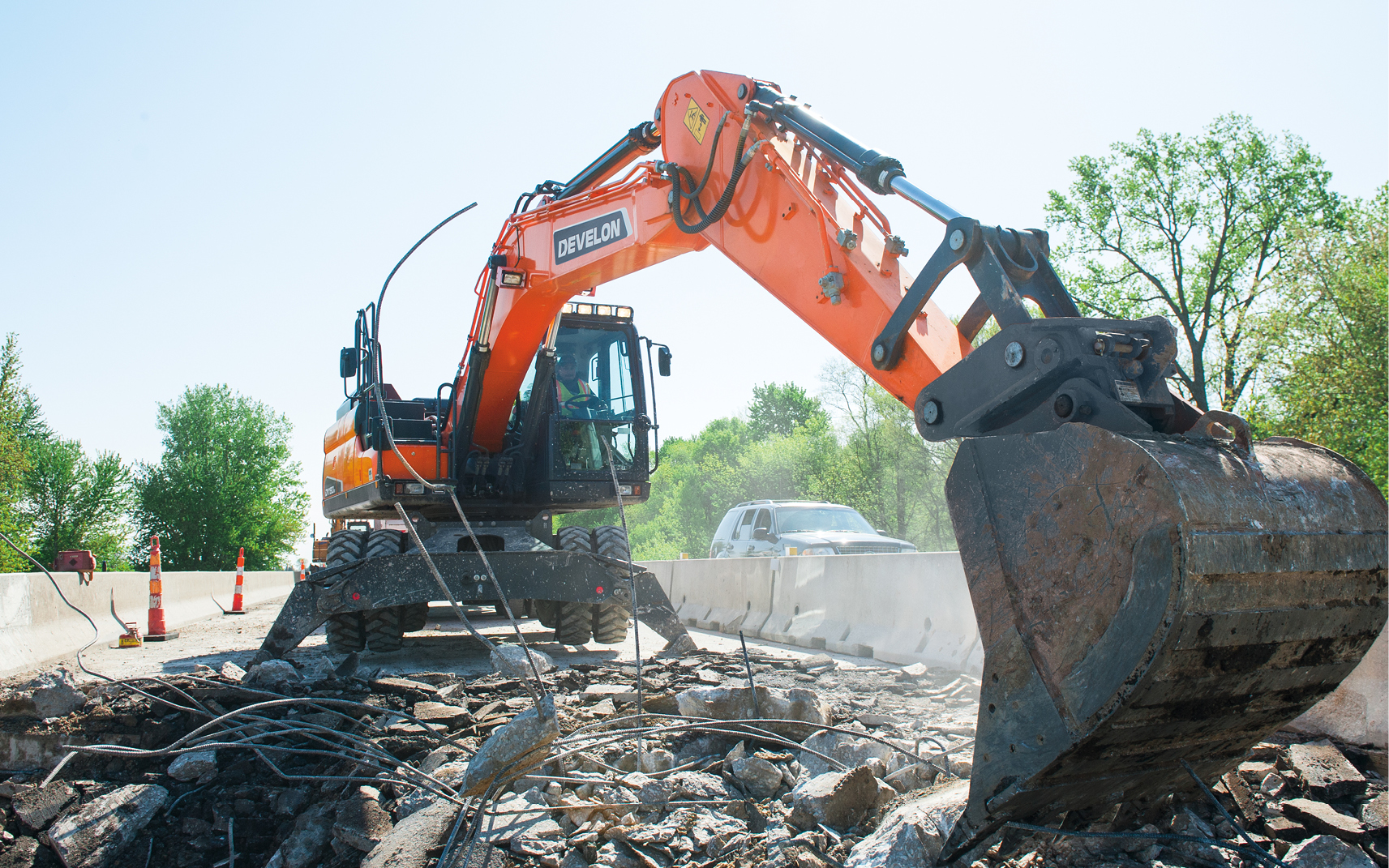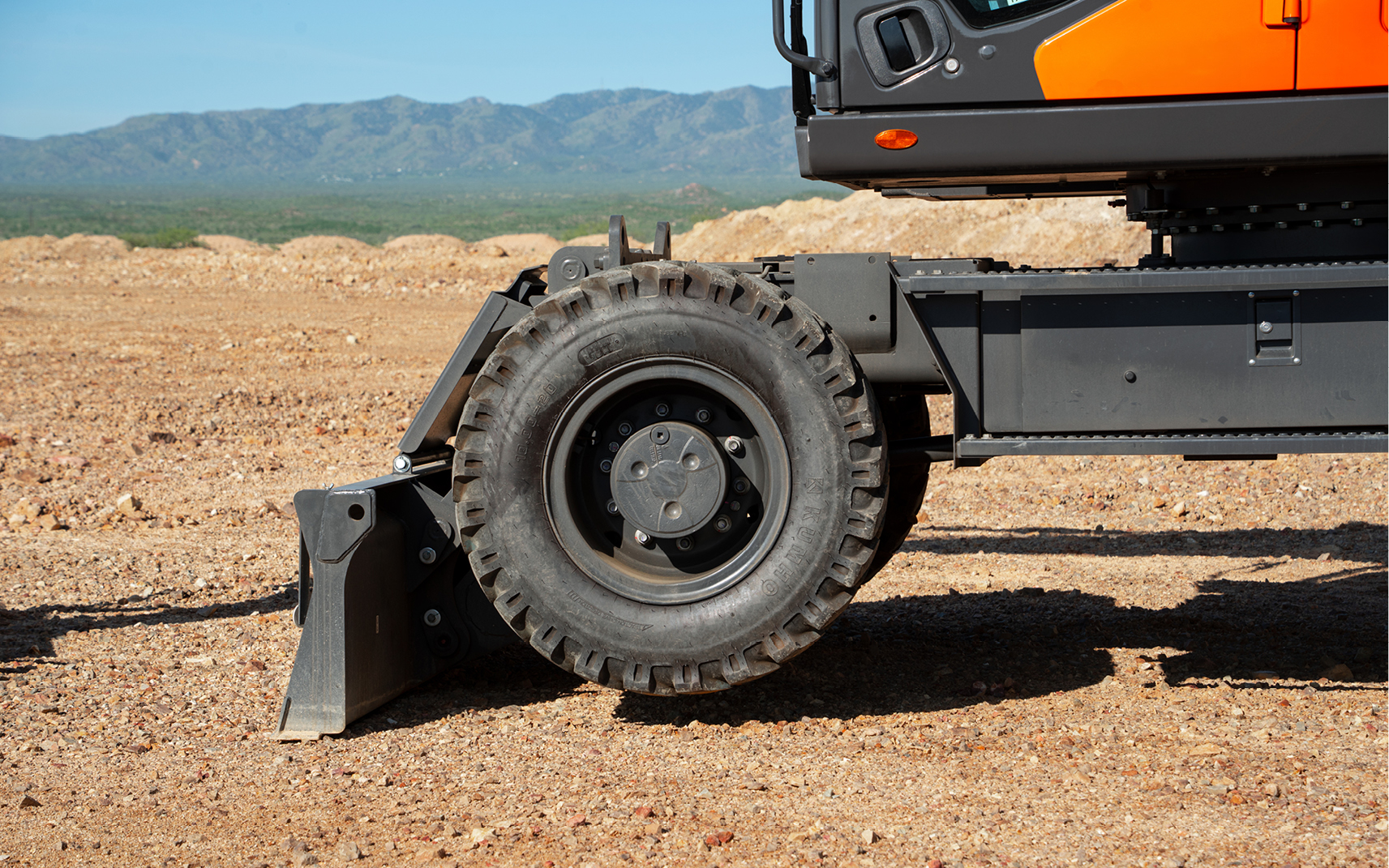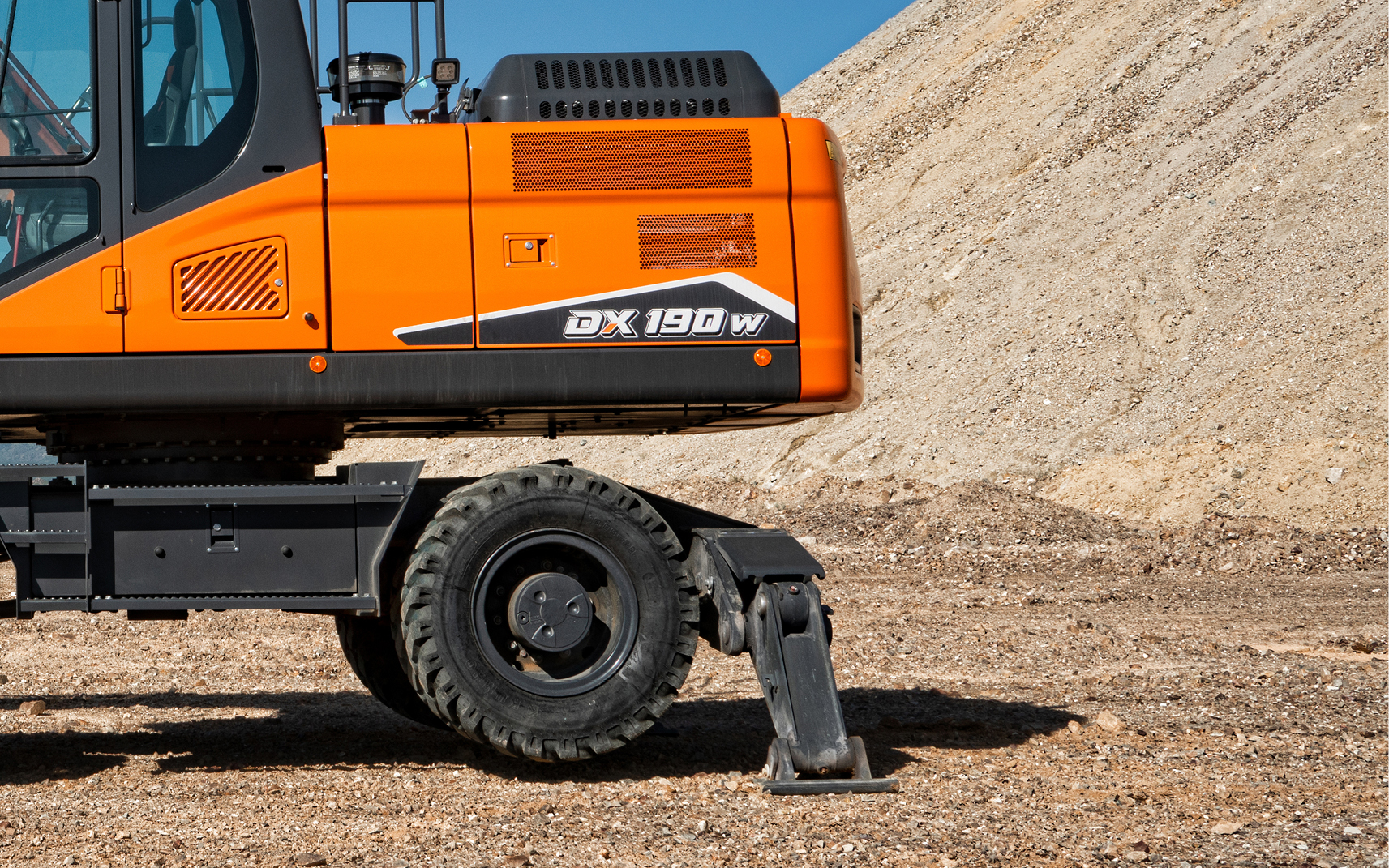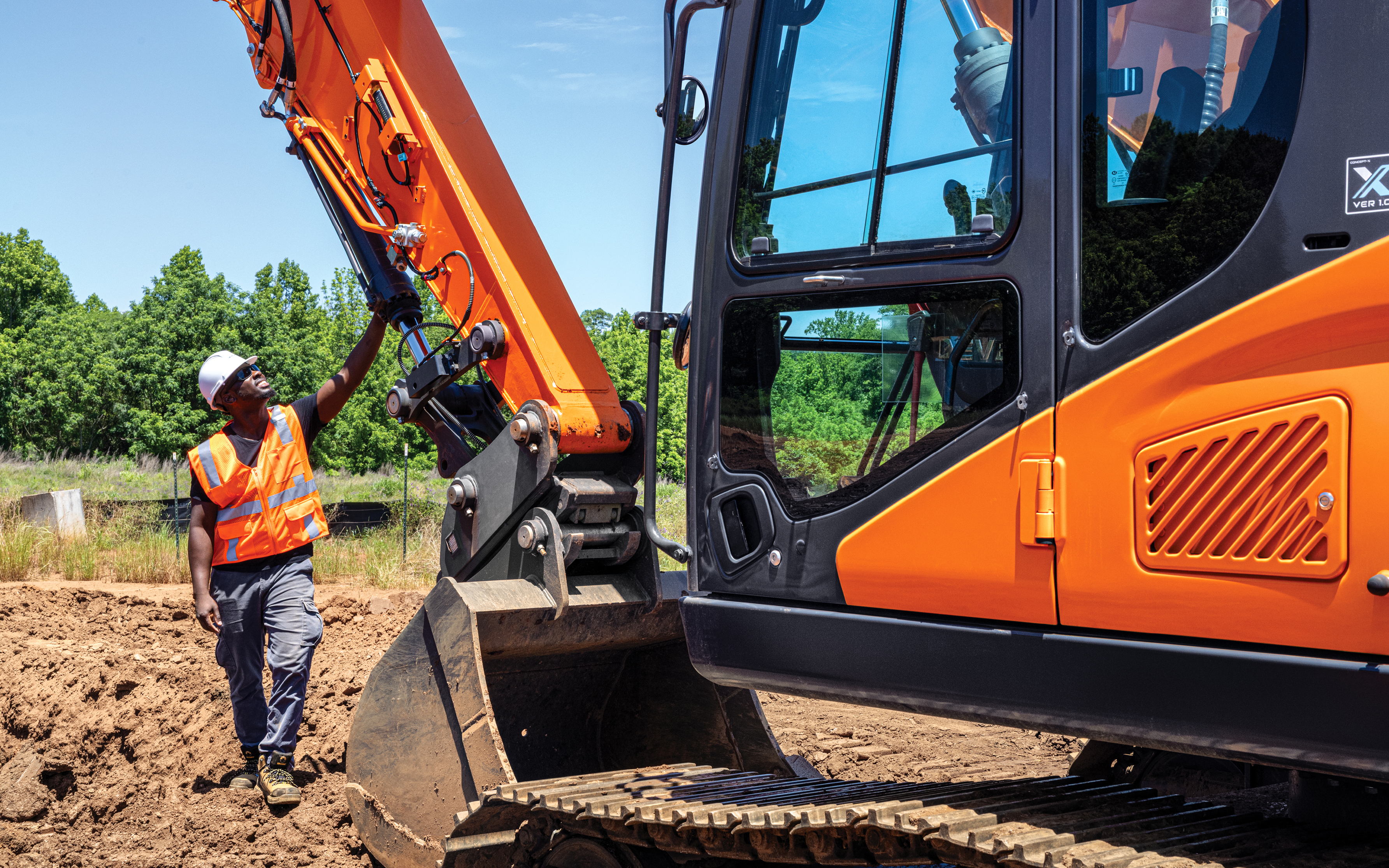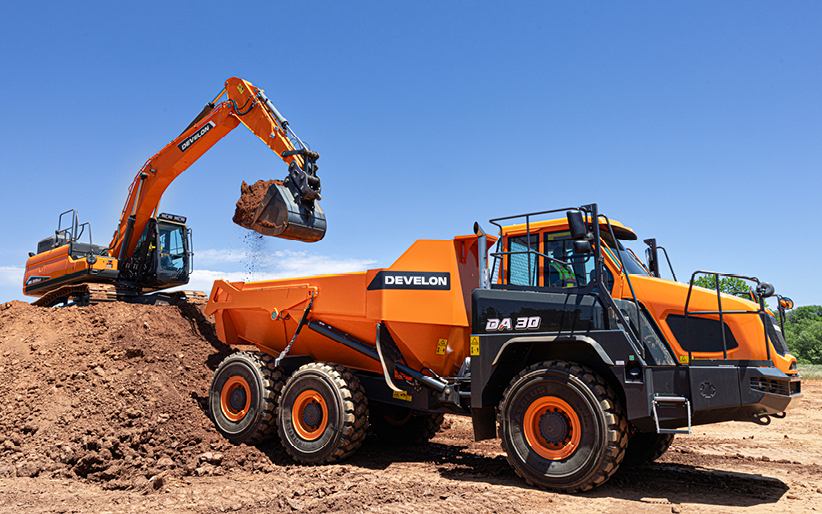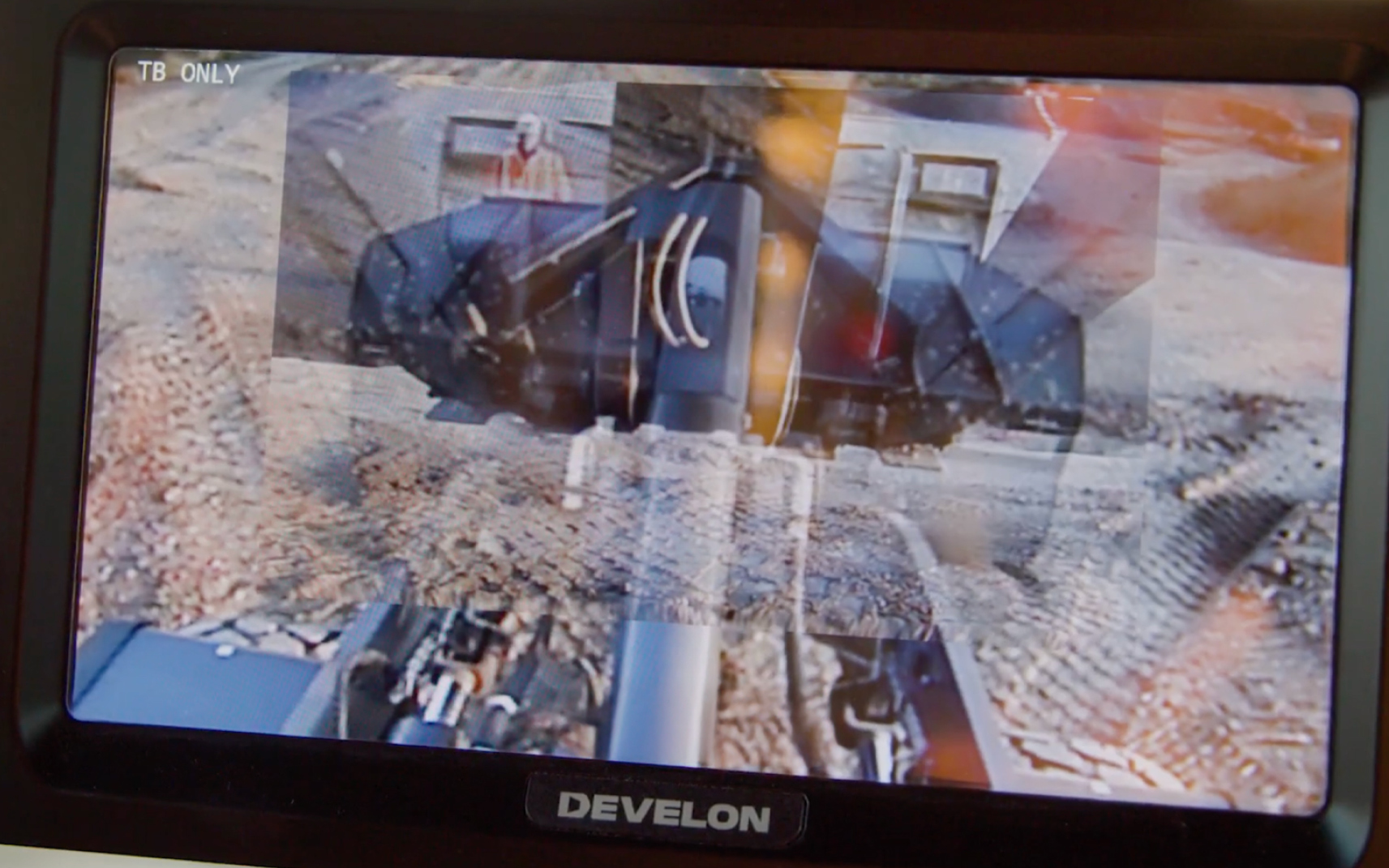Wheel excavators are gaining prominence in North America and can be spotted on a wide variety of job sites, where they excel at performing construction, landscaping and material-handling tasks.
The use of these machines is on the rise in construction and material-handling settings due primarily to their outstanding mobility, speed, versatility, tail swing and safety features. Wheels enable these excavators to move quickly between different work areas, a particular advantage when the machine needs to cover longer distances.
Moreover, their ability to accept various attachments makes them well-suited for an array of tasks, including excavation, demolition and material handling.
Many wheel excavators are equipped with outriggers and dozer blades that enhance their stability, especially when working on uneven surfaces, and bolster the wheel excavator’s capability to handle challenging terrains with confidence. Here are the top five applications for these machines.
Highway and Bridge Construction
Wheel excavators are well-suited for tasks on finished surfaces, such as concrete and asphalt highways. The machine’s rubber tires can travel across these surfaces without damaging them or leaving unsightly marks.
This quality has endeared general-purpose wheel excavators to contractors and municipalities who frequently work on pavement. Plus, this mobility allows seamless transitions between on-road and off-road locations, making them versatile machines for digging trenches. These machines serve as excellent complements to traditional earthmoving construction equipment, such as heavy-duty crawler excavators.
A popular feature available is a two-piece articulating boom. This configuration allows contractors working in road and bridge construction to:
- Stretch farther to dig or lift and unload materials.
- Dig deeper and closer to the wheel excavator.
- Reach higher when loading materials.
- Go up, around and under obstacles commonly found in road construction.
Another notable benefit is their ability to travel on the shoulder of the road. In this capacity, these excavators can efficiently dig and clear ditches and remove debris or mow grass and brush in the ditch. This streamlines ditch maintenance while minimizing disruptions to the adjacent roadway — a convenient and practical solution.
Street Development and Maintenance
Municipalities across North America employ wheel excavators to move easily across established roads and perform new street construction and maintenance tasks. Their size, coupled with rubber tires, allows them to work in congested areas. These can include large urban areas where there may be limited space to transport and operate the excavators, as is often the case in the northeast United States.
Traditionally, municipalities have favored tractor loader backhoes for underground construction projects, particularly utility repairs. However, the trend is shifting toward the use of wheel excavators and mini excavators due to the versatility and extended reach these machines offer. The machines in particular boast an extended reach capability that surpasses that of tractor loader backhoes, which benefits trenching and truck-loading situations.
Operators responsible for moving them can select the high travel speed option, enabling them to reach top speeds of more than 20 mph. This not only facilitates faster travel to the next job site but also eliminates the need to load the machine onto a trailer for transportation, resulting in valuable time and fuel savings.
Site Development and Land Improvement
When necessary, wheel excavators can easily move from on-road to off-road to accomplish traditional construction tasks like trenching, grading and backfilling.
Unlike compact excavators, wheel excavators can be configured in two ways: with four outriggers or two outriggers and a dozer blade. The outriggers and dozer blade help to stabilize them in digging applications or when operators are lifting objects. The machine’s outriggers can be individually controlled to level the machine on slopes. A lift eye mounted to the hydraulic quick coupler enables operators to connect a chain to lift and place objects such as pipes.
Once operators are done trenching, they can utilize the dozer blade to easily and precisely backfill the trench. This can save valuable time and maximize the use of the machine — rather than bringing multiple pieces of heavy equipment to construction sites.
Landscaping and Grading
Wheel excavators are exceptionally well-suited for landscaping and grading tasks. When traveling across finished landscapes, they minimize surface damage so less repair work is required at the end of the job.
These excavators excel at preparing areas for new landscapes and clearing existing vegetation, including trees and stumps, utilizing attachments such as buckets and thumbs. When combined with an auger attachment, they can swiftly dig holes for new plantings and fence posts.
For light grading tasks on landscaping projects, the excavator’s dozer blade proves to be a valuable tool. Whether the goal is to grade a yard or establish slopes, the dozer blade offers the versatility needed for operators to successfully complete these tasks.
Material Handling
Facilities like scrap metal recycling centers and solid waste transfer stations frequently operate wheel excavators. In these applications, operators typically pair them with a grapple attachment or a magnet to lift materials and place them into containers or railcars, or for debris removal.
Certain models can be configured with hydraulic rising cabs that provide additional visibility for the operators. This feature proves particularly helpful when operators are loading materials in containers and want to optimize the available loading space.
The adoption of wheel excavators in these five applications is poised for further expansion. This trend is driven by the exceptional capabilities and high-performance features these machines offer.
Explore the features and specs of DEVELON wheel excavators.
The appeal of wheel excavators is on the rise in construction and material-handling settings, due primarily to their outstanding mobility, speed, versatility, tail swing and safety features."Thomas Lee, Product Strategy Manager

By Thomas Lee, Product Strategy Manager
Thomas Lee is a product strategy manager at DEVELON. He has more than 15 years of experience working in the heavy equipment industry and leads the product management team for all heavy products.

